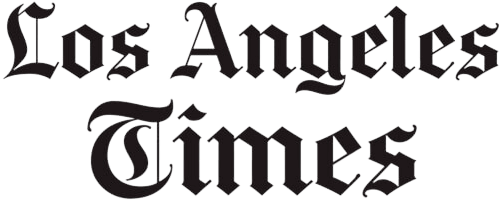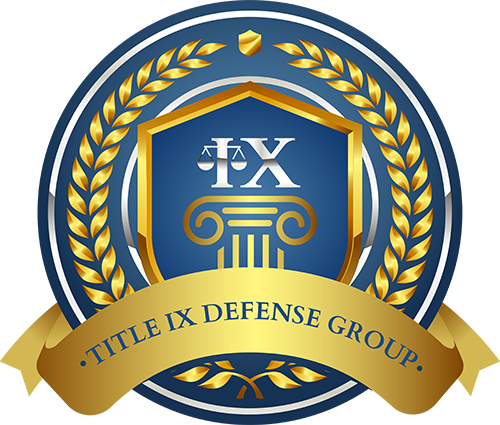In the realm of college sports, the introduction of Name, Image, and Likeness (NIL) policies marks a pivotal shift, reshaping traditional notions of amateur athletics. These policies grant collegiate athletes the ability to leverage their personal brands for financial gain, offering a path to endorse products, capitalize on social media platforms, and explore various other revenue streams. This move fundamentally alters the age-old model of amateurism in college sports. In parallel, Title IX stands as a critical federal mandate, instrumental in fostering gender equity in sports within educational institutions, ensuring equal access and opportunities for athletes of all genders.
However, with the growing prominence of NIL policies, there arises a potential friction with the core tenets of Title IX. This intersection introduces a nuanced and complex scenario, sparking concerns about safeguarding the principles of Title IX amidst the evolving landscape of NIL and its possible conflicts. The interaction between NIL and Title IX presents a challenging conundrum, as the sports world navigates this new terrain where the financial empowerment of athletes under NIL intersects with the imperative of gender equality championed by Title IX.

NIL Policies
At its core, NIL refers to the rights of collegiate athletes to monetize their personal brand – a stark contrast to the traditional model where athletes were not compensated beyond scholarships and stipends for their role in generating revenue for their institutions.
Definition of NIL in College Athletics
In the context of college sports, NIL allows student-athletes to earn money from their fame and public presence. This can include payment for endorsements, social media promotions, personal appearances, and autograph signings. Essentially, NIL rights empower athletes to use their name, image, and likeness for commercial purposes while still participating in college athletics.
Current State of NIL Policies
Currently, NIL policies vary by state, as individual states have enacted their own laws governing NIL activities. The NCAA has provided a broad framework, but much of the regulation is decentralized, leading to a patchwork of rules and guidelines. This has created a dynamic environment where athletes, institutions, and brands are navigating uncharted waters to maximize opportunities under these new regulations.
Key NIL Agreements and Their Impact
The impact of NIL policies on college athletes has been profound. High-profile athletes have signed lucrative deals with major brands, while others have leveraged their local or niche popularity. Key agreements have included exclusive endorsements, partnerships with sports and lifestyle brands, and deals driven by social media influence. These opportunities not only provide financial benefits to athletes but also allow them to build their personal brands and gain business experience while still in college.
NIL policies have ushered in a transformative era in the world of college sports, moving beyond the rigid confines of traditional amateurism to pave the way for unprecedented economic prospects for student-athletes. This evolution of NIL regulations is not just altering the financial dynamics for these athletes but also significantly redefining their interactions with their educational institutions and the larger sports industry landscape. As these policies evolve, they continue to mold a new narrative in college athletics, where the balance of opportunity, education, and commercial interests intersects in novel and complex ways.

Potential Areas of Conflict: NIL and Title IX
As Title IX defense lawyers and experts analyze this evolving landscape, several potential areas of conflict emerge, especially regarding financial disparities, recruitment, scholarship distribution, and media coverage.
Financial Disparities Between Male and Female Athletes
One of the most prominent areas of conflict lies in the financial disparities that could arise between male and female athletes. Title IX mandates gender equity in all aspects of education, including athletics. However, NIL deals, largely influenced by market demands and media visibility, could disproportionately favor male athletes, especially in high-revenue sports like football and basketball. Title IX defense lawyers point out that such disparities could undermine the equity principles at the heart of Title IX, potentially leading to legal challenges.
Impact on Recruitment and Scholarship Distribution
NIL policies could also impact the dynamics of athlete recruitment and scholarship distribution. Traditionally, scholarships have been a key tool for maintaining gender equity in sports programs under Title IX. However, with the advent of NIL, there’s a concern that the allure of lucrative NIL deals could skew recruitment efforts and affect how scholarships are distributed, potentially disadvantaging female athletes or sports with less commercial appeal. Legal experts warn that institutions must tread carefully to ensure that NIL opportunities do not inadvertently violate Title IX’s equity requirements.
Effects on Media Coverage and Sponsorship Opportunities
Media coverage and sponsorship opportunities are also areas where NIL and Title IX could conflict. Typically, male-dominated sports receive more media attention, which could translate to more lucrative NIL deals for male athletes. This disparity in visibility and consequent financial benefits could challenge the principles of equitable treatment under Title IX. Title IX defense lawyers emphasize the need for educational institutions to be mindful of how media contracts and sponsorships are negotiated and executed in the NIL era to avoid inadvertent gender biases.
Specialists in the field, encompassing Title IX defense lawyers and academics in sports law, propose that effectively navigating the potential clashes between NIL policies and Title IX demands meticulous policy development and implementation. They recommend an anticipatory strategy, urging institutions to evaluate how NIL policies affect gender equity consistently. To mitigate these conflicts, they advise ensuring transparency in the structuring of NIL agreements, providing equal opportunities for marketing across genders, and emphasizing regular training and educational initiatives focused on Title IX compliance. This approach, they argue, is crucial for maintaining the balance between the burgeoning opportunities presented by NIL and the foundational principles of gender equity mandated by Title IX.

Legal Perspectives on NIL and Title IX Conflicts
Legal professionals specializing in sports law and Title IX matters express concerns about maintaining compliance with Title IX in the era of NIL. Lawyers highlight that while NIL policies offer substantial benefits to student-athletes, they must be navigated carefully to avoid infringing on Title IX’s mandate for gender equity in education and athletics. They emphasize the need for educational institutions to conduct thorough equity assessments when implementing NIL policies, ensuring that these new opportunities do not create an imbalance between male and female athletes.
Perspectives from Educators and Sports Administrators
Educators and sports administrators are keenly aware of the challenges posed by the integration of NIL into college sports. Many express the need for a balanced approach that respects both the entrepreneurial spirit of NIL and the equity goals of Title IX. Administrators are exploring ways to provide equal marketing and endorsement opportunities to all athletes, regardless of gender, to align with Title IX requirements. They are also considering how to educate athletes and staff about the legal intricacies of NIL and Title IX to foster a compliant and fair environment.
Ongoing and Potential Litigation
The legal terrain surrounding NIL and Title IX is in a state of flux, presenting numerous prospects for legal disputes. Legal authorities are vigilantly monitoring the structuring of NIL agreements and their implications for gender equity in athletics. There is a growing concern that litigation might ensue due to potential disparities in the distribution and promotion of NIL opportunities between male and female athletes. Additionally, there could be legal challenges questioning whether educational institutions’ policies are effectively upholding Title IX standards in the new context of NIL. Such impending legal confrontations have the potential to establish critical precedents, shaping the future interplay between NIL agreements and Title IX’s mandates.
Legal experts emphasize the necessity of a forward-thinking strategy in creating and implementing policies that align with these regulations. The objective is to effectively capitalize on the opportunities NIL provides to student-athletes, while simultaneously ensuring adherence to Title IX’s fundamental tenet of gender equality.
Mitigating Conflicts: Aligning NIL Policies with Title IX Regulations
Developing Equitable NIL Policies:
- Comprehensive Policy Framework: Institutions should develop NIL policies that are mindful of Title IX requirements. This includes creating guidelines that ensure equal opportunities for all athletes to benefit from NIL, regardless of gender.
- Regular Policy Reviews: Frequent reviews and updates to NIL policies can help institutions stay compliant with Title IX as the NIL landscape evolves.
Ensuring Gender Equity in NIL Era:
- Equal Access to Resources: Institutions should provide equal access to resources that can help athletes capitalize on NIL opportunities. This includes marketing support, financial literacy programs, and legal advice.
- Monitoring and Reporting: Regular monitoring of NIL activities and their impact on gender equity is essential. Institutions should establish transparent reporting mechanisms to track and address any disparities.
Educational Initiatives:
- Athlete Education: Educating athletes about NIL opportunities, as well as their rights and responsibilities under Title IX, is crucial. This can be achieved through workshops, seminars, and mentorship programs.
- Staff Training: Training for coaches, administrators, and staff on the nuances of NIL and Title IX is essential to ensure they are equipped to support athletes appropriately.
Creating Equitable Marketing Opportunities:
- Partnerships and Sponsorships: Institutions can work with sponsors and partners to create marketing opportunities that are equitable and accessible to all athletes.
- Promoting All Sports: A concerted effort to promote all sports, not just the traditionally high-revenue ones, can help balance exposure and NIL opportunities across genders.
Addressing the challenges presented by the intersection of NIL policies and Title IX regulations demands a comprehensive strategy that integrates thoughtful policy formulation, educational efforts, and the fair allocation of resources. Institutions embracing such strategies will be better positioned not just to meet legal obligations but also to cultivate an equitable and inclusive atmosphere. This environment is essential for enabling all student-athletes to prosper under the new dynamics introduced by NIL in the era of Title IX.

The insights and perspectives from legal experts, including Title IX defense lawyers, educators, and sports administrators, reveal that navigating these conflicts requires a deep understanding of both NIL and Title IX regulations. They advocate for proactive policy development, educational initiatives, and equitable resource distribution to align NIL opportunities with Title IX commitments.
As we conclude, it is clear that the journey to balance NIL opportunities with Title IX commitments is ongoing and complex. This balance is not just a legal imperative but also a moral one, ensuring that the spirit of fairness and equality in collegiate sports is upheld. It is crucial for all stakeholders in the world of college athletics to continue this dialogue, remain attentive to developments, and collaboratively seek solutions that honor both the entrepreneurial spirit of NIL and the foundational values of Title IX.











